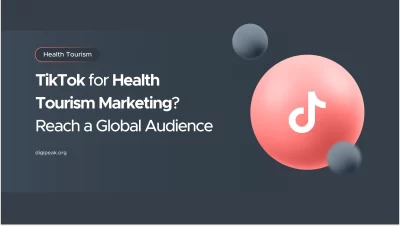
Instagram Tips: Step-by-Step Guide for a Successful Profile
Before moving on to Instagram tips; Instagram significantly impacts not only social life but also …
27/02/2023 -
5 dk okuma
Stay up to date with Peakers
Social media algorithms are changing and developing day by day. Marketers can optimize their social media content according to these algorithms. Algorithms connect many users and systems, therefore create order. In this article, we will talk about how the algorithm of social media platforms works.
An algorithm is a sequence of operations that has no beginning and end. It can be defined as the path to a particular goal. Social media algorithms aim to maintain order. It also helps to rank search results and ads. The sorting sequence these algorithms will offer can help optimize social media data. Learning the ranking of your account and search results in social media usage is an important guide for your progress in this medium.
Got a Hefty Ads Budget but No Conversions?
Get a Free Social Media Audit!
Why are your ad campaigns getting clicks but not converting into purchases? Are you reaching the target audience effectively? Let's evaluate your social media strategy. Fill out the form now for a free analysis!
Social media algorithms work with artificial intelligence to track the posts that users interact with, their likes on platforms, the websites they visit, and generate data. These algorithms calculate what the person likes, what he or she pays attention to, and how long he or she stays in which content. Based on these data and calculations, it recommends users social media accounts that will interest them.
Each social media algorithm is planned differently according to the platform it is on. In other words, social media algorithms vary from platform to platform. However, there are mainly followed platforms in the field of digital marketing. We can list these platforms as follows:
As we mentioned above, social media algorithms vary from platform to platform. Let’s examine each in detail.
The number of monthly active Facebook users in 2022 was 2.96 billion. The key to the Facebook algorithm is “meaningful customer engagement”. Facebook works to improve user experiences by tracking active user movements. The platform analyzes the comments, likes or shares on a post and moves similar posts to the top of the stream. The user is targeted with Facebook ads. The platform actively uses algorithms thanks to its face recognition feature. Facebook builds its algorithms based on three basic categories. These are categories such as:
The number of monthly active Instagram users in 2023 is 1.28 billion. Instagram algorithms are based on showing information to as many people as possible. That’s why the Instagram algorithm focuses on making the content known through engagement from relevant content and links. Instagram algorithms works with titles such as:
To reach your target audience on Instagram, you can review A Comprehensive Guide to Target Your Instagram Audience.
The number of active Twitter users in the world is 1.3 billion. Twitter algorithms are not just about the relationship of posts with people; It also sorts by the date and time of the posts. Tweets are moved to the top of the main stream according to the rate of comments or retweets they receive. The Twitter algorithm works according to three basic patterns.
The number of active Pinterest users in 2022 was 444 million. Pinterest algorithms are created using guided search, and data from past content interactions followed by new links. The Pinterest algorithm helps posts to rank high by paying attention to 4 attributes in the post. These features are as follows:
The number of active LinkedIn users is 875 million. LinkedIn is a pioneer in B2B (business to business) marketing. LinkedIn algorithms work according to the “site-link-interaction” ratio. LinkedIn algorithms are basically created for two purposes. These purposes are as follows:
If you enjoyed reading our content titled “How Do Social Media Algorithms Work?”and would like to learn more about social media tools, we recommend you to take a look at our article titled “Facebook Business Suite”.
To sum up, it is essential for any company with online ambitions to have a firm grasp of how social media algorithms function. Businesses may increase interaction with their social media content by using the latest targeting tools and keeping up with the ever-changing social media algorithms. Engagement, relevance, and recency are three of the most important aspects of social media algorithms.
Digipeak is a great partner to have if you want to boost your company’s social media presence and keep up with the ever-changing algorithms used by social media platforms. Digipeak can assist you in creating a thorough strategy to enhance your social media performance and expand your online presence thanks to its knowledge of social media marketing and algorithm tactics. To advance your social media marketing to the next level, get in touch with Digipeak today.
You can review our other articles on Social Media below:
Get an Offer


Join Us So You Don't
Miss Out on Digital Marketing News!
Join the Digipeak Newsletter.
Related Posts

Before moving on to Instagram tips; Instagram significantly impacts not only social life but also …

In today’s digital age, social media has become an indispensable tool for businesses across industries. …

In recent years, health tourism has grown into a thriving industry, attracting people worldwide in …

Social media is now practically essential for every sector. The healthcare sector too falls in …